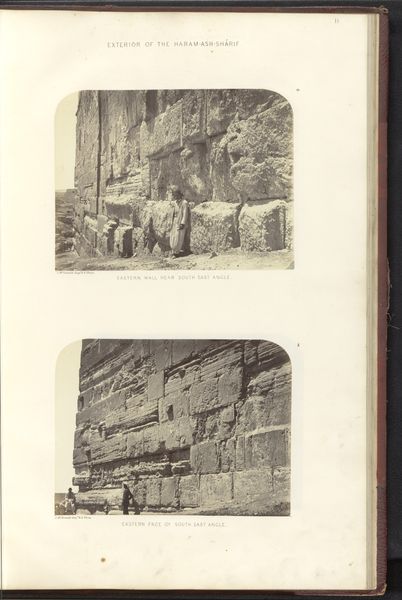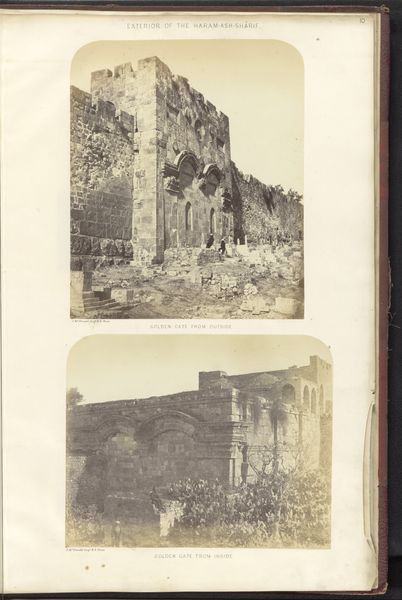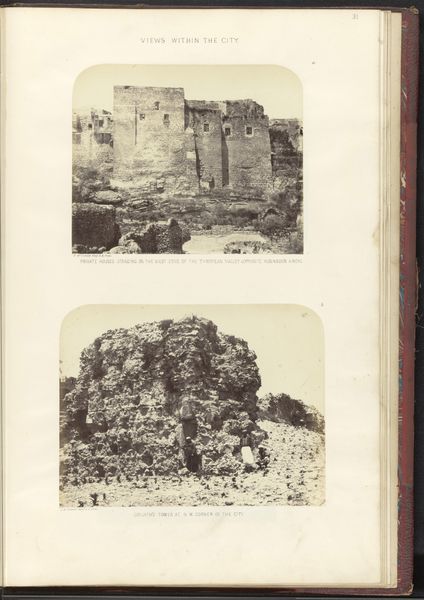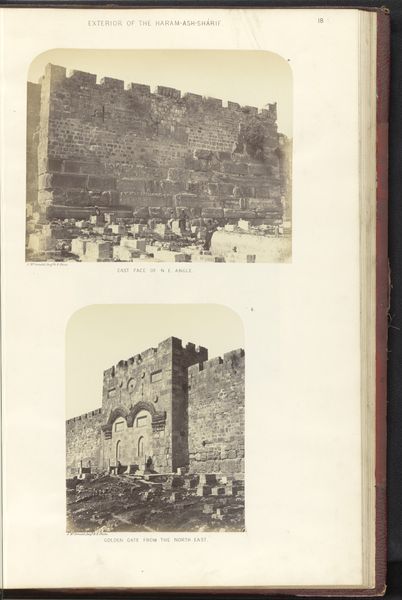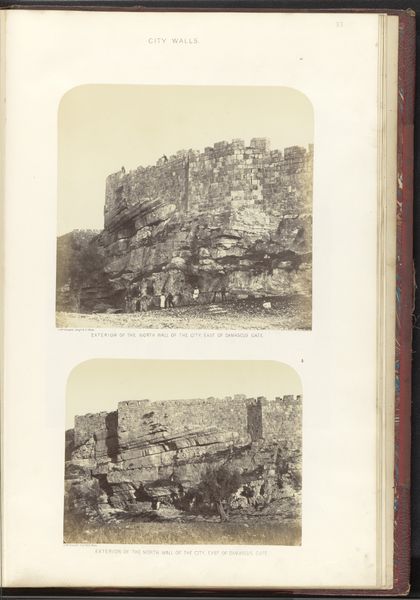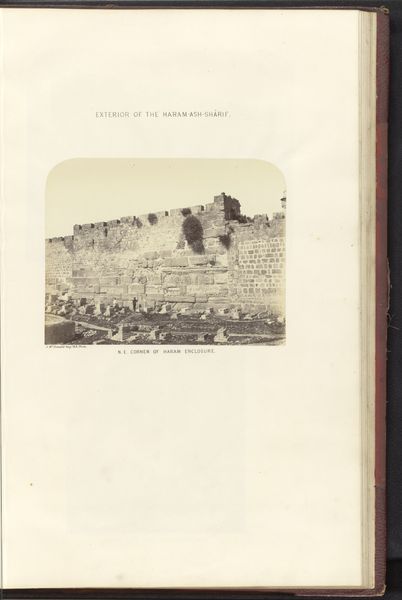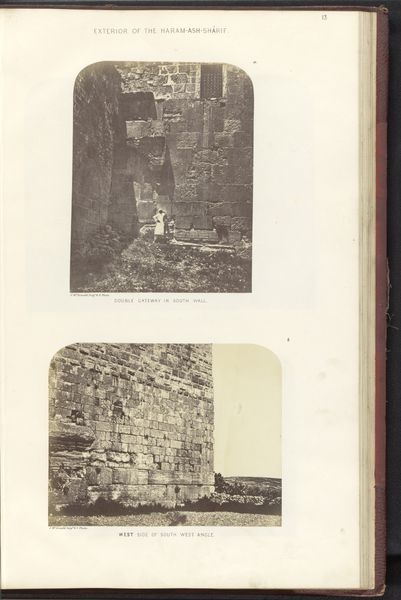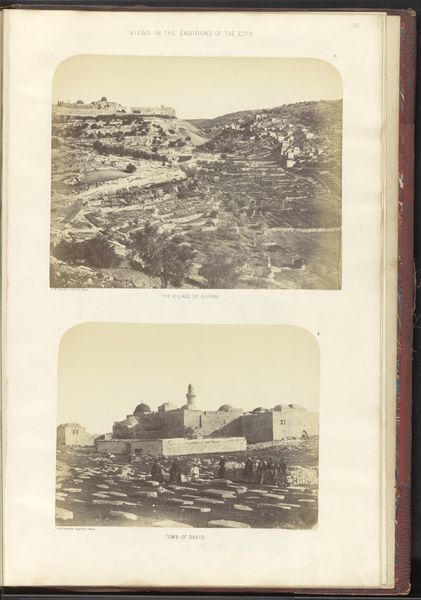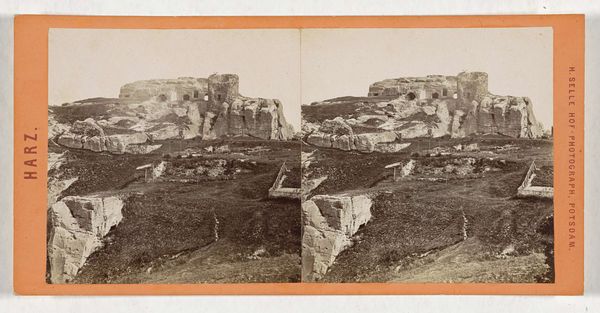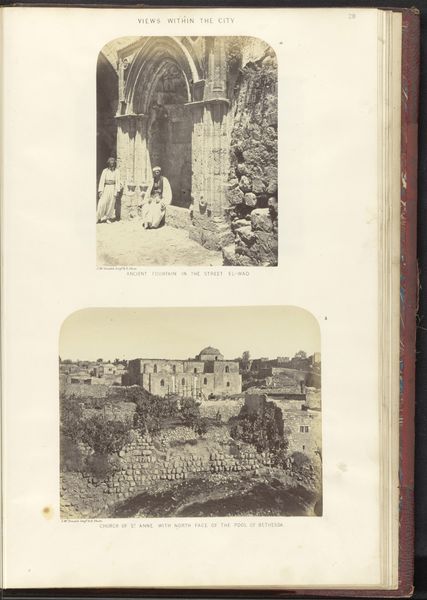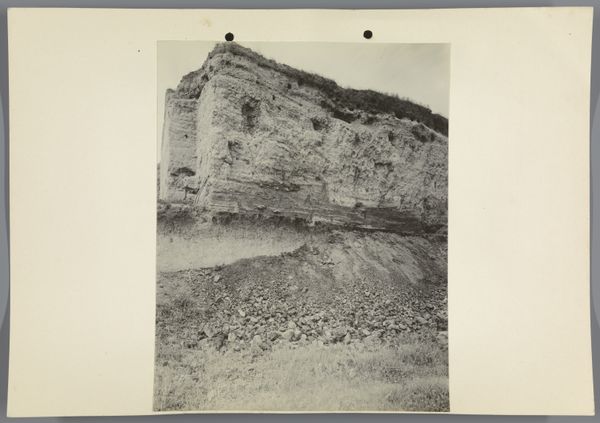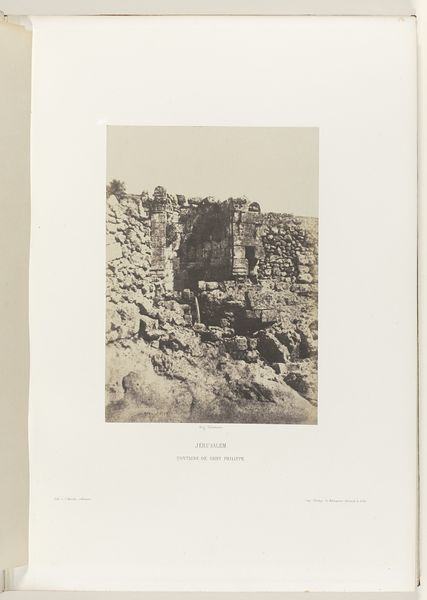
Twee gezichten op de zuidelijke muur bij de zuidoostelijke hoek van de Tempelberg in Jeruzalem before 1865
0:00
0:00
photography, albumen-print
#
landscape
#
photography
#
coloured pencil
#
islamic-art
#
albumen-print
Dimensions: height 523 mm, width 340 mm
Copyright: Rijks Museum: Open Domain
Editor: Here we have James McDonald’s "Twee gezichten op de zuidelijke muur bij de zuidoostelijke hoek van de Tempelberg in Jeruzalem," taken before 1865. The albumen print captures the Temple Mount's southern wall in stark detail. I’m immediately struck by how monumental and imposing the architecture appears. What do you see in this piece? Curator: What stands out to me is how this photograph participates in a larger project of documenting and, frankly, possessing the Holy Land through the new medium of photography. Think about the socio-political context: mid-19th century, European powers vying for influence in the Ottoman Empire. Editor: So the image itself is a kind of power play? Curator: Precisely. Photography allowed for a seemingly objective record to be created and disseminated, shaping public perception. Note how the people in the frame are dwarfed, almost insignificant. This emphasizes the perceived permanence and grandeur of the architecture, but also implicitly reinforces a colonial gaze. Who do you think this image was for? Editor: Probably for a European audience. It definitely feels like it's designed to inspire awe and perhaps even a sense of ownership or dominance. Curator: Exactly! And consider how the depiction of Islamic holy sites at this time might fuel or justify certain political agendas. It’s never just a neutral representation. Editor: I never considered photography in this context before; it definitely provides a new lens on historical power dynamics. Thanks! Curator: Likewise, it's important to always consider the motivations and context behind these images, rather than accepting them at face value. It enriches the viewing experience.
Comments
No comments
Be the first to comment and join the conversation on the ultimate creative platform.
